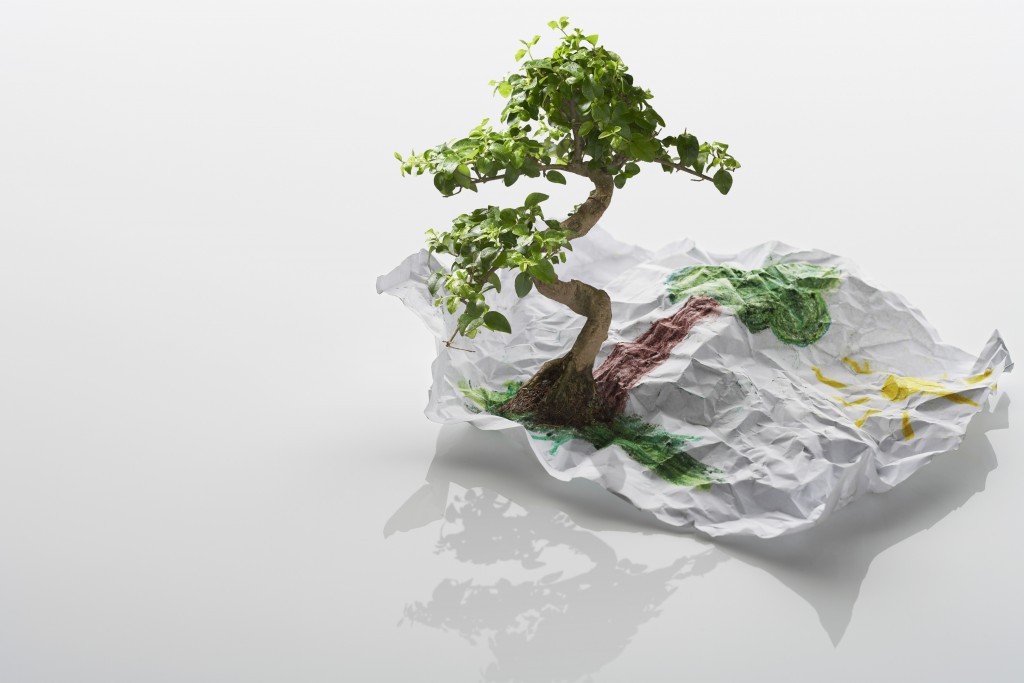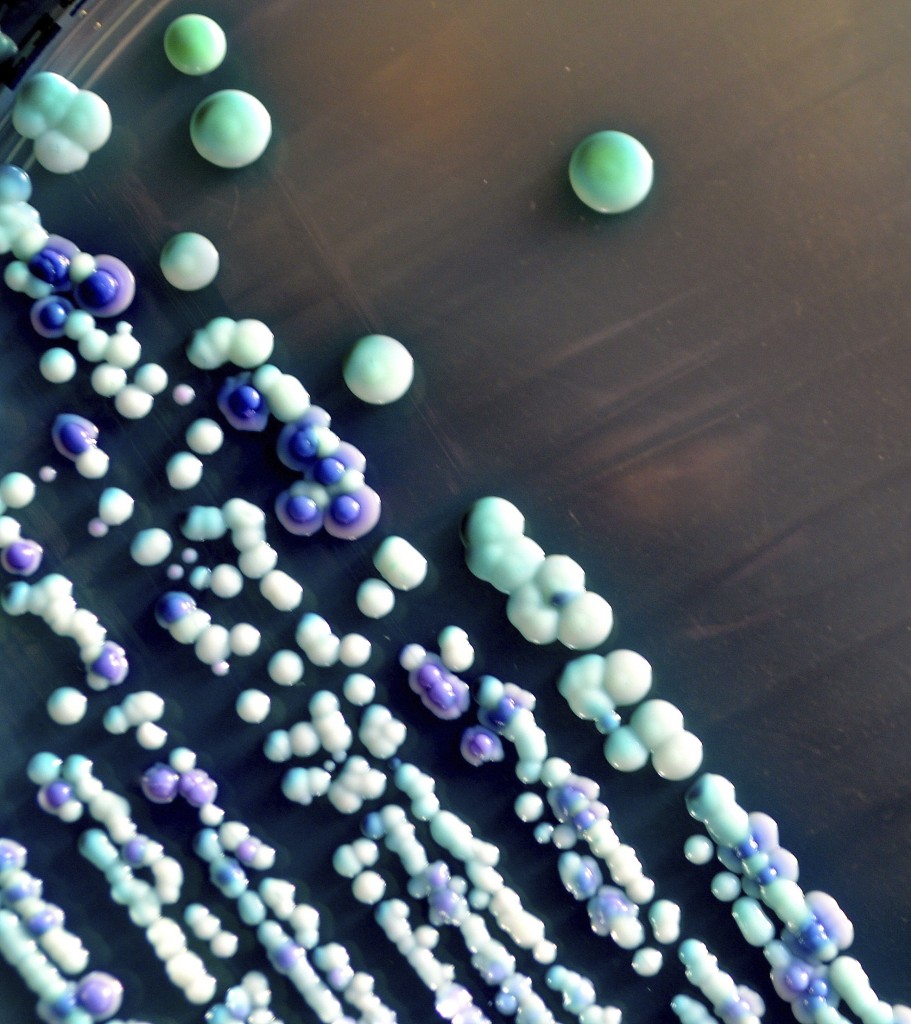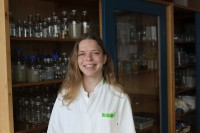Last tree standing ...can evolution endure?
15 Apr 2016 by Evoluted New Media
Climate change and pollution threaten biodiversity and human society alike. But can evolution keep up?
Climate change and pollution threaten biodiversity and human society alike. But can evolution keep up? With up to 70 generations of descendants within a single day, watching evolution in E.coli and yeast can provide valuable insights into whether organisms can adapt to such changes.
Just like human society, natural environments are constantly changing. In winter, temperatures and precipitation are very different from what they are like in summer. A patch of land that is dry one day may be flooded by an overflowing river the next. Even within a single day, conditions can change quite dramatically. Think, for example, of a plant in the desert: at night there is no light available for it to perform photosynthesis, while at the same time temperatures drop below freezing point. Just hours later, however, the same desert will be burning hot, and the plant is all but scorched by the sun. In each of the above cases, there are likely to be at least some organisms that are able to survive the changes in their environment. In fact, some may even need them; they have come to anticipate them. This remarkable achievement is the result of thousands, or even millions, of years of adaptation by natural selection, where only the organisms that were best adapted to their changing environments survived to pass on their genes to the next generation.In our world today, organisms face new, even greater, challenges than those posed by the occasional flooding or parasite infestation. Our climate is changing rapidly, and at the same time we are unable to keep pollution under control. We have known for quite a while now that both these developments may pose serious threats to biodiversity, and with the climate summit in Paris last year, it has once again become achingly clear that we can no longer ignore them. Climate change and pollution do not just put a few endangered species at risk, but significantly affect agriculture, energy, public health, as well as many other subject areas vital to human wellbeing. So it is important that we learn to better understand how organisms, including ourselves, will respond to these human-induced changes. Are they able to adapt, or will they become extinct?
[caption id="attachment_53088" align="alignnone" width="620"] Species will have to adapt to ever changing climates to avoid extinction[/caption]
Species will have to adapt to ever changing climates to avoid extinction[/caption]
One way in which organisms can temporarily cope with a changing environment is by migrating to a different location where circumstances are more favourable. Alternatively, they can use their innate ability to physiologically (or behaviourally) adapt their phenotype in response to the environment in which they find themselves. However, there are clear limits to what can be achieved in these ways, and both strategies are likely to be insufficient for the long-term survival of many species. This is especially true when changes are both severe and persistent, as is the case with climate change and pollution. In such situations, the only way for organisms to adapt to their new environments is by mutation and selection, that is, by adaptive evolution. But can we be sure that organisms can evolve to better cope with increased temperatures and levels of pollutants? And, if they can, can we predict what solutions they will find?
Such questions are obviously difficult to answer, because evolution generally takes place over long periods of time. Also, many different factors will be at play at once. By the time we know how organisms do or do not respond, it may be too late. A potential solution to this problem comes from a deceptively simple experimental approach that has gained much popularity over the past two decades: experimental evolution. In a nutshell, what this entails is letting organisms evolve under controlled conditions, mostly in the laboratory, and keeping track of what happens. Typically, microorganisms such as bacteria and yeast are used for this because they reproduce extremely fast.But can we be sure that organisms can evolve to better cope with increased temperatures and levels of pollutants?
For example, the bacterium Escherichia coli can divide in only 20 minutes, so that in theory it can produce over 70 generations of descendants within a single day. By growing replicate populations under controlled conditions for many generations, it is possible to systematically address how different environmental variables affect the evolutionary process. An added benefit of using microorganisms for these studies is that they can easily be stored frozen at -80°C, and revived whenever required. This makes it possible to directly compare the performance of evolved organisms with that of their ancestors by letting them compete with each other within a single tube or Petri dish. In this way, it is possible to measure how well they do relative to each other, something that is referred to as relative fitness.
The longest laboratory evolution experiment to date, which is still ongoing, is running in the laboratory of Richard E. Lenski at Michigan State University, and now amounts to over 60,000 bacterial generations. The experiment was begun in 1988, and consists of twelve replicate populations of the bacterium E. coli that are grown under glucose limiting conditions and are diluted into fresh flasks of growth media every day. The long term evolution experiment (LTEE), as it is called, has yielded some very important insights into how evolution works, some of which were predicted by theory, others of which were entirely unexpected.[caption id="attachment_53089" align="alignnone" width="620"] The LTEE began in 1988 and has provided scientists with a vast wealth of knowledge on evolution.[/caption]
The LTEE began in 1988 and has provided scientists with a vast wealth of knowledge on evolution.[/caption]
For example, during the initial stages of the experiment, all populations rapidly adapted to their new environment – their relative fitness increased very fast. Over time, though, the populations “ran out of options” in terms of major steps forward, and fitness increase levelled off. This was exactly as predicted. However, even if fitness increase slowed down over time, it never came to a halt. In fact, the bacteria are still acquiring new beneficial mutations as we speak, after almost thirty years in a stable environment!
While the LTEE and comparable studies have been invaluable for our understanding of the evolutionary process, they have one important shortcoming: in all but a few cases, these experiments look at what happens in a new, constant environment. In contrast, in nature populations rarely encounter such dramatic changes in their environment all of a sudden. Often, as with climate change and pollution, the environment changes more gradually. So, an important question that remains is, whether the insights obtained from experiments in stable environments also apply when the environment changes more gradually.
In a paper recently published in The American Naturalist, we addressed this question using a relatively straightforward experimental evolution setup. We grew replicate populations of the baker’s yeast Saccharomyces cerevisiae in the laboratory for 500 generations, which we achieved by culturing the yeast in tubes with rich growth media and transferring 1% of each population to a new tube every single day for a total of 75 days. During this time, some populations were exposed to high concentrations of the toxic heavy metals cadmium, nickel or zinc from the start, so that they could initially only barely escape extinction. For other populations, we gradually increased the concentration of the same metals over the course of the experiment. We then went on to measure how fast the yeast had adapted to their new environments, and how adapted they ended up being, by measuring the relative fitness of the populations at different time points. Additionally, we sequenced the genomes of both ancestral and evolved yeast strains to see what mutations they had acquired.We had some a priori expectations about what would happen under each of our treatments. We anticipated that a more gradual increase in metal concentration should delay fitness increase. This could be for either one of two reasons: first, it could simply be that selection is stronger at high concentrations, so that if a beneficial mutation occurs, it will be selected faster when the metal concentration is high. Second, it could be that different mutations are selected at different metal concentrations. In that case, populations that are exposed to gradually increasing concentrations will adapt using a different set of mutations than those exposed to constant high concentrations.
We anticipated that a more gradual increase in metal concentration should delay fitness increase
In terms of adaptation to the final, high metal environment, this would be equivalent to the populations exposed to gradual change initially taking a detour instead of the steepest route to the top. Such detours should also delay fitness increase. However, what is more interesting is that we cannot predict where they will lead to eventually: it might be the same adaptive peak, but it could also be a different, potentially even higher one. In the latter case, it would make sense to try and slow down environmental change, because this should allow populations to find better evolutionary solutions to the same challenges.
As expected, we found that a more gradual increase in metal concentration delays evolutionary adaptation. However, at the end of our experiment there was no difference in relative fitness between the populations that had been exposed to gradually increasing concentrations vs. those that had been exposed to constant high concentrations. As it turned out, this happened for different reasons for cadmium on the one hand, and nickel and zinc on the other. In the case of cadmium, we found that the same mutations were selected under both rates of environmental change, but that selection was faster at high concentrations (our first hypothesis).[caption id="attachment_53090" align="alignnone" width="550"] Baker's yeast was exposed to a variety of differing conditions to see how it would adapt.[/caption]
Baker's yeast was exposed to a variety of differing conditions to see how it would adapt.[/caption]
This can be explained by the fact that cadmium is a non-essential heavy metal: basically, it is toxic at all concentrations, so that the same “solutions” are likely to be favoured at all concentrations. In contrast, for nickel and zinc, different mutations were selected at different concentrations (our second hypothesis). Both these metals are essential, which means that they are required in small amounts, but toxic at high levels. So, there are likely to be different optimal “solutions” for maintaining a constant intracellular concentration of these metals at different external concentrations. Unfortunately, the “detours” taken by the populations adapting to gradually increasing concentrations of nickel and zinc did not cause them to end up being more adapted. So, slowing down environmental change may not be that helpful after all.
So, what do these results tell us about evolutionary adaptation in the “real world”? Bacteria and yeast are much simpler organisms than plants and animals. However, yeast is not as simple as it may seem: it is a eukaryote (i.e. its cells have a nucleus), and in fact it shares many genes and other features with higher organisms. So, the genetic changes that we uncovered in our experiments also shed new light on the genetics of metal tolerance in, for example, plants. This is helpful for applications such as heavy metal bioremediation, where metals are removed from contaminated sites by metal-accumulating plants and microorganisms.
So, the genetic changes that we uncovered in our experiments also shed new light on the genetics of metal tolerance in, for example, plants
More generally, our work provides new insights into how evolution is affected by different rates of environmental change. Although adaptation was delayed in our gradually changing environments, as we expected, we did not find support for our intuition that such delay might allow populations to ultimately find better solutions to the challenges they face. This is potentially worrying, because it could mean that slowing down environmental change will not be of much help to the organisms that need to adapt to climate change and pollution. However, on a more hopeful note, we did find that some of the populations exposed to more gradual change used different mutations for adaptation. It is possible that these mutations turn out to be the better “choice” in the long run, because they set the stage for other additional adaptations that are not available otherwise. Also, it is unclear to what extent our results apply to other stressors (such as other pollutants and increasing temperatures) and organisms.
All in all, there is still a lot to be found out about how evolution can help organisms cope with a changing environment. However, we know that it is possible in principle. The next step to follow in the exciting field of experimental evolution will be to investigate the effect that different factors have on evolutionary adaptation in more detail, and for more different organisms and stressors, so that we can deduce the underlying governing principles. This knowledge can then be put to use in devising new ecosystem management strategies that can help us mitigate the detrimental effects of climate change and pollution on the world around us.

Author: Florien Gorter is a PhD candidate in the Laboratory of Genetics at Wageningen University, The Netherlands.













